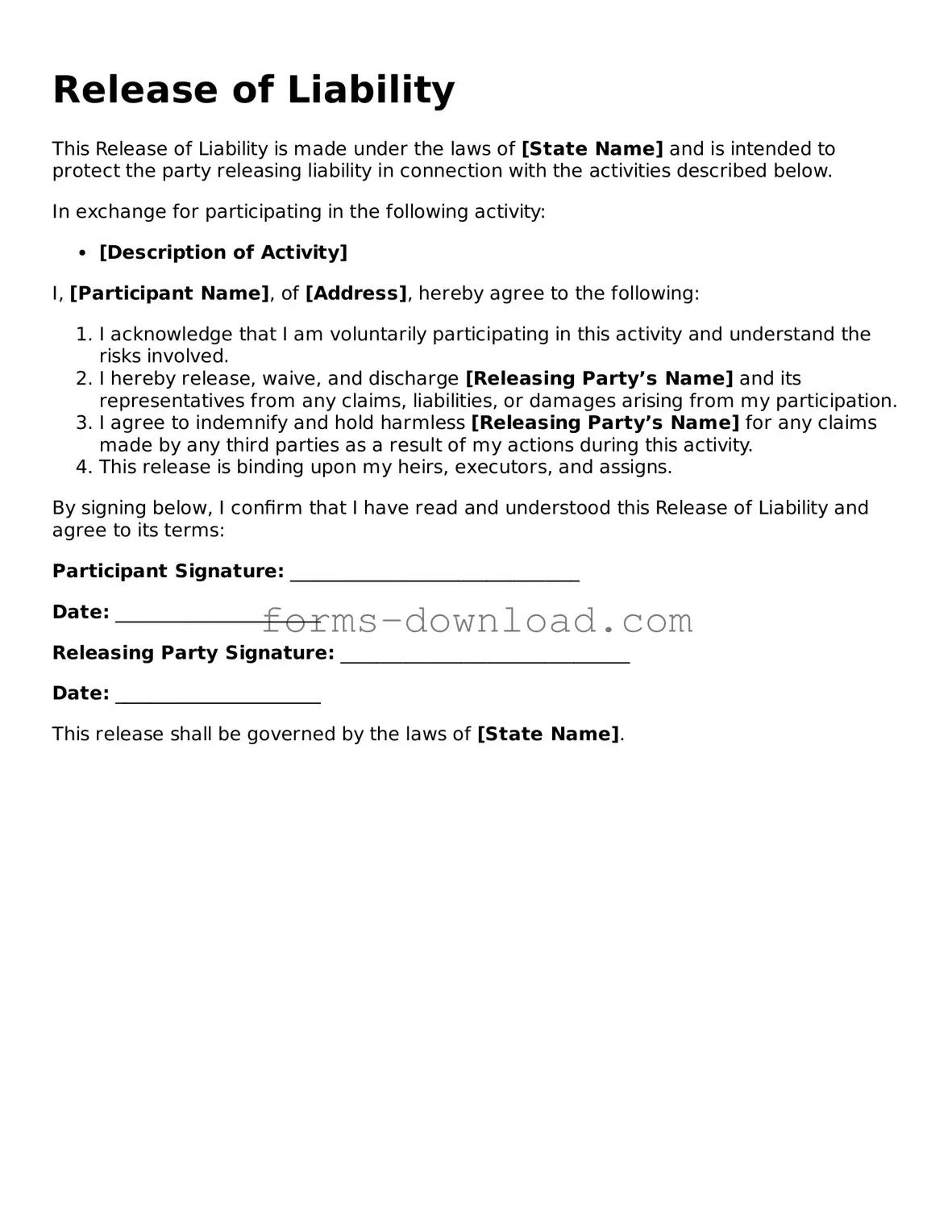Release of Liability
This Release of Liability is made under the laws of [State Name] and is intended to protect the party releasing liability in connection with the activities described below.
In exchange for participating in the following activity:
- [Description of Activity]
I, [Participant Name], of [Address], hereby agree to the following:
- I acknowledge that I am voluntarily participating in this activity and understand the risks involved.
- I hereby release, waive, and discharge [Releasing Party’s Name] and its representatives from any claims, liabilities, or damages arising from my participation.
- I agree to indemnify and hold harmless [Releasing Party’s Name] for any claims made by any third parties as a result of my actions during this activity.
- This release is binding upon my heirs, executors, and assigns.
By signing below, I confirm that I have read and understood this Release of Liability and agree to its terms:
Participant Signature: _______________________________
Date: ______________________
Releasing Party Signature: _______________________________
Date: ______________________
This release shall be governed by the laws of [State Name].
